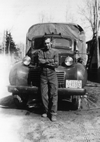16. Milk
WITHIN A FEW DAYS, Maria regained enough of her stamina to resume nursing, an activity that had become almost routine for her over the previous four years. Her afternoon interlude with Raffaello was interrupted, however, by a soft, barely audible knock on the door. When Maria opened the door, she beheld a wisp of a woman: an enfeebled young mother hardly capable of holding the hungry, crying infant in her arms.
“Spanish flu?” Maria inquired, eliciting a somber nod from the neighbor. The two women couldn’t speak the same language much beyond those universally dreaded words. So Maria pointed to the babe in the woman’s arms and then pointed to her own breast, looking the other mother in the eyes, nodding and smiling.
No spoken words could have expressed the gratitude of this ailing mother any better than her faint cry of surprise and her widened, enthusiastic eyes. She handed her child over to Maria, wiped away a tear, and tottered home.
A nationwide terror of the Spanish flu had scared some people from caring for others. But once Maria recovered from her own bout with the illness, she nursed the babes of other stricken moms in the neighborhood for the remainder of the epidemic. “There’s no use letting my milk go to waste,” she told those who could understand her. For Maria, nursing someone else’s child was a privilege, not a sacrifice.
By February 1919, the Spanish flu had run its course through the states of the upper Midwest. Lehigh Row could resume its customary pattern of population growth.
Maria delivered two more girls into the hands of Serafino. Bice arrived in 1920. She was named for her Aunt Bice Baccanale, who had died earlier that year in Farindola as a young girl. Algisa arrived in 1923. From 1914 to 1923, Lehigh Row had given birth to six Di Gregorios: Ida, Mafalda, Leonata, Raffaello, Bice, and Algisa.
